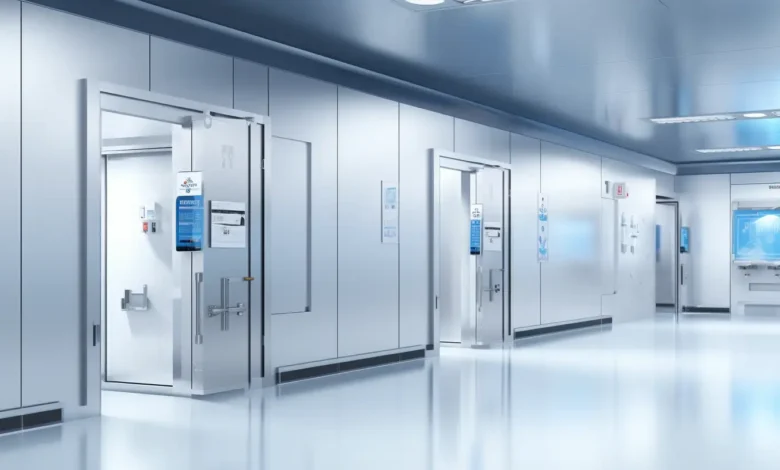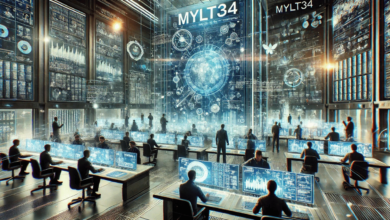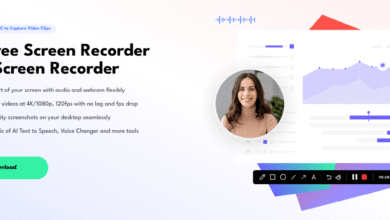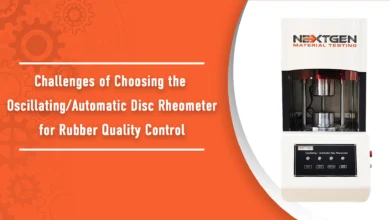What You Need to Know Before Buying a Walk-In Freezer or Walk-In Cooler

Walk-in coolers and freezers are invaluable assets for businesses in the food, hospitality, and medical industries. Choosing the right one requires a comprehensive understanding of several technical and operational factors. This guide covers everything you need to know to make an informed purchase, whether you’re outfitting a restaurant, grocery store, laboratory, or other facility that needs reliable refrigeration solutions.
1. Understanding Walk-In Coolers and Freezers: Key Differences
At the core, both walk in coolers and freezers provide temperature-controlled environments for storing perishable goods. However, they serve different functions and maintain different temperature ranges:
- Walk-In Coolers: These maintain temperatures between 35°F and 41°F, ideal for storing perishable items like fruits, vegetables, dairy, and some types of beverages.
- Walk-In Freezers: Designed to keep items frozen, they typically maintain temperatures below 0°F, suitable for long-term storage of meats, seafood, and frozen products.
Choosing between a cooler and a freezer depends on the specific needs of your business. Some facilities require both, and in such cases, a combination unit with separate compartments may be a better investment.
2. Size and Capacity Considerations
Determining the correct size for your walk-in cooler or freezer is one of the most critical factors. Undersizing can lead to insufficient storage, while oversizing can lead to higher operational costs. Here’s what to consider:
- Storage Requirements: Evaluate your inventory and the volume of perishable or frozen items you need to store daily. Restaurants, for example, typically need a smaller walk-in cooler compared to grocery stores or large food distributors.
- Available Space: Measure the area where the unit will be installed, considering factors like ceiling height, width, and depth. Walk-ins are available in various dimensions, and custom solutions can be built for unique spaces.
- Growth Potential: If your business is likely to grow, consider a walk-in cooler or freezer that can accommodate future storage needs. It’s easier to manage initial operational costs than to replace a unit prematurely due to lack of capacity.
- Shelving and Organization: Efficient shelving systems within the walk-in space optimize storage. Adjustable, durable shelving can help organize goods, making it easier to manage inventory and reduce food waste.
3. Location and Placement of the Walk-In Unit
Choosing the right location for your walk-in cooler or freezer can impact its efficiency and lifespan:
- Indoor vs. Outdoor: Walk-ins can be installed indoors or outdoors. Indoor units are generally easier to access but may require additional HVAC considerations to prevent heat buildup. Outdoor units save indoor space but need weatherproofing and reinforced insulation to handle temperature fluctuations.
- Proximity to Service Areas: Place your unit close to the kitchen, prep area, or loading dock to streamline workflow and reduce the time items are outside the temperature-controlled environment.
- Ventilation Requirements: Walk-in coolers and freezers generate heat that needs to be vented. Ensuring adequate ventilation around the unit helps prevent overheating and prolongs the lifespan of the refrigeration system.
4. Insulation Quality and Energy Efficiency
Proper insulation is critical for maintaining the desired temperature while minimizing energy consumption. Walk-in units with high-quality insulation can result in significant energy savings over time:
- Insulation Thickness: Insulation thickness generally ranges from 3 to 6 inches. Freezers usually require thicker insulation than coolers to maintain extremely low temperatures. A thicker insulated wall helps prevent temperature fluctuations, reducing energy usage and enhancing performance.
- Polyurethane or Polystyrene Panels: Polyurethane panels offer superior insulation due to their high R-value, making them ideal for both coolers and freezers. Polystyrene panels are slightly less efficient but can be cost-effective in milder climates.
- Energy-Efficient Doors: The door of a walk-in cooler or freezer is a primary point of energy loss. Look for features like self-closing doors, magnetic gaskets, and heavy-duty hinges to reduce air leakage. Some units also offer heated doors to prevent condensation.
- Lighting: LED lighting uses less energy and emits minimal heat, which is ideal for refrigeration units. It also reduces the load on the cooling system, resulting in further energy savings.
5. Temperature Control and Monitoring Systems
Maintaining consistent temperatures is crucial for food safety and compliance. Investing in advanced temperature control systems can help ensure stability and prevent spoilage:
- Digital Thermostats and Controllers: Digital thermostats provide precise control over the internal temperature, allowing easy adjustments and real-time monitoring. Some units come with programmable controls to set specific temperature ranges for different items.
- Remote Monitoring Systems: Remote monitoring systems allow you to track temperature data remotely through a smartphone or computer. These systems alert you to temperature fluctuations, equipment malfunctions, or door openings, which can help you prevent spoilage and costly losses.
- Alarm Systems: Many walk-in coolers and freezers are equipped with temperature alarms that notify staff if the temperature rises above the set range. Alarms are especially useful for units that store valuable or sensitive products, such as pharmaceuticals or high-value meats.
6. Compressor and Refrigeration System Types
The compressor is the heart of the refrigeration system, and selecting the right type can affect both performance and efficiency:
- Remote Condensing Units: A remote condensing unit is placed outside the cooler or freezer area, which reduces the amount of heat and noise within the building. These systems are efficient but may require more complex installation and maintenance.
- Self-Contained Units: These units house the compressor and condenser within the cooler or freezer structure, offering a compact solution that is easier to install. However, they may produce more heat and noise and are usually better suited for smaller installations.
- Split-System Compressors: A split system has a compressor located outside the building, similar to remote systems. They offer high efficiency and are commonly used in larger installations or outdoor units.
When choosing a compressor, consider the climate of your location, as well as the volume and temperature requirements of your stored products. Energy-efficient compressors may come with a higher upfront cost but will lead to significant savings over time.
7. Installation and Building Codes
Walk-in coolers and freezers must comply with local building codes and regulations. These regulations often cover areas such as safety, energy efficiency, and structural integrity:
- Permits and Inspections: Depending on your location, you may need permits to install a walk-in cooler or freezer. Failure to comply with local building codes can lead to fines, delays, or issues with insurance coverage.
- Health and Safety Regulations: For food service businesses, walk-in units must adhere to food safety standards set by organizations like the FDA or local health departments. Proper sanitation, regular maintenance, and pest control measures are necessary for compliance.
- Fire Safety and Electrical Codes: Walk-in coolers and freezers must meet electrical and fire safety codes, including the use of appropriate wiring, lighting, and ventilation. Some areas may also require emergency release mechanisms on doors for employee safety.
8. Cost Factors and Financing Options
Investing in a walk-in cooler or freezer involves several cost factors beyond the initial purchase price. Being aware of these can help you make a financially sound decision:
- Initial Purchase Cost: The cost varies based on size, insulation type, compressor type, and customizations. Basic models can start as low as $5,000, while larger, feature-rich units may exceed $20,000.
- Installation Costs: Installation can include structural modifications, electrical wiring, and ventilation setup. Indoor units are typically easier and cheaper to install than outdoor units, which may require additional weatherproofing.
- Operational Costs: Consider the long-term operational costs associated with energy consumption and regular maintenance. High-efficiency units may cost more initially but provide savings on utility bills over time.
- Maintenance and Repairs: Maintenance is essential to keep your unit functioning optimally. Regular checks on the compressor, fans, and insulation can prevent breakdowns. Some companies offer extended warranties or maintenance contracts, which can help manage repair costs.
- Financing Options: Many suppliers offer financing options to help businesses manage the initial investment. Leasing, rent-to-own, and payment plans can help you acquire a high-quality unit without compromising cash flow.
9. Supplier and Manufacturer Reputation
Choosing a reputable supplier and manufacturer can affect both the quality of your walk-in cooler or freezer and the level of service you receive:
- Experience and Specialization: Look for manufacturers who specialize in commercial refrigeration and have a track record of quality products. Established companies typically offer better support, warranties, and replacement parts.
- Customer Service and Support: Consider the level of support you might need post-purchase, especially if this is your first walk-in cooler or freezer. Good customer service can help with troubleshooting, repairs, and warranty claims, ensuring your unit stays operational.
- Warranties and Guarantees: Review warranty options for both the structure and the refrigeration components. Warranties provide peace of mind, especially when covering critical components like compressors and insulation panels.
10. Maintenance and Cleaning Requirements
Proper maintenance and cleaning help prolong the lifespan of your walk-in cooler or freezer and ensure food safety:
- Regular Cleaning: Clean floors, shelves, and walls regularly to prevent mold, bacteria, and odors. Stainless steel surfaces, common in foodservice walk-ins, are easy to clean and resist rust.
- Defrosting for Freezers: Walk-in freezers require periodic defrosting to prevent ice buildup, which can compromise efficiency. Some models have automatic defrosting systems, making maintenance easier.
- Routine Checks on Seals and Insulation: Check door gaskets and panel insulation for damage. Replacing worn-out seals can help maintain temperature stability and reduce energy consumption.
- Preventive Maintenance: Scheduling regular maintenance with a professional technician can prevent major repairs. This includes checking the compressor, fans, and electrical systems to ensure everything is working efficiently.
Conclusion
Buying a walk-in cooler or walk in freezers is a significant investment that requires thorough planning and informed decision-making. By understanding the technical aspects, regulatory requirements, and long-term cost considerations, you can choose a unit that meets your business needs and maximizes efficiency. Remember to assess your storage requirements, installation space, energy efficiency options, and maintenance needs before making a purchase. With a well-chosen walk-in cooler or freezer, your business can improve product quality, ensure safety, and reduce operational costs over time




